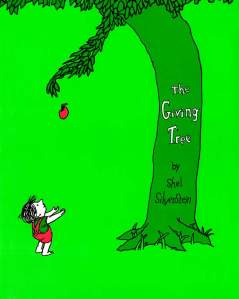Today I continue my discussion of the Myers-Briggs Personality Inventory as a way to develop more depth to written characters and as a way to improve your own relationships. I am no expert, so for more information consult the Myers-Briggs Foundation.
Myers-Briggs uses the terms Thinking and Feeling, which I don’t care for. “Feelers” do, indeed, think, and “thinkers” do, indeed, feel. So, I’m calling these categories “T” and “F”
As with all Myer-Briggs categories, the T/F designation is a continuum. Some people are strong Ts, some mild Ts, some in the middle, some mild Fs and some strong Fs.
The T/F category deals with how people make decisions.
Fs take into consideration how people will be affected by the decision, what others will think about the decision. This is a major element in an F’s decision-making process, though it is not the only element. I am a strong F, which is apparent because I am constantly thinking about my family in every decision I make. What should I make for dinner? Craig will like this, but Tom won’t. Of course, other things affect my decision: what ingredients do we have at home? will I have to go to the store? do I have time to go to the store? what is the expense? etc. So, my decisions are based on many things, but what other people will think of the final decision is a big part of how I make my decision. If I work late, how will that affect everyone else? If I sleep in? Even with things that should not, on the surface, affect others, in my head I’m guessing how they will feel about it.
Ts put less emphasis on what others think. They approach decision-making in a logical, objective fashion. They don’t want to be influenced by what others think, and, in fact, consider it a poor decision-making strategy. Ts pride themselves on their objectivity. They often take a long time to make a decision, gathering all the necessary data, so that when they make a decision, it is well-thought out and correct. How their decision will affect others may be one of the data points, but it also may not. T’s are more concerned about being right than being popular. Ts are sometimes shocked by people’s responses to their decisions. Because Ts consider their decisions logical and objective, they think everyone else will see them in this way. When they make a decision that others disagree with, they cannot understand why others disagree and try to change the other’s mind. “Let’s agree to disagree” doesn’t work with a T, because they need to fix the other person’s incorrect opinion.
When an F makes a decision that is going to be unpopular, the F is prepared for that response. The F feels bad for making others unhappy with the decision, but other factors weighed heavily and the F can explain those factors. If others object a lot, the F may reconsider the decision. The F may realize that she did not guess correctly how the decision would affect others. Ts can change their mind, but usually only when the data they used to make the decision changes or is shown to be inaccurate or incomplete.
This is the only Myers-Briggs category that has a strong gender bias. Most women are Fs and most men are Ts. Because of this, society expects women to think about others and men to be objective and logical. Life is hard for female Ts and male Fs. Female Ts are seen as ruthless and uncaring, and male Fs are seen as wimpy and wishy-washy.
One way of making decisions is not better than another way. In fact, having a mix of Ts and Fs in a group will probably create a healthy and diverse approach to decision-making.
Your place on the T and F continuum is what is natural to you, similar to your place on the extroversion/introversion continuum (discussed in my last post, see below). Trying to change a T into an F or an F into a T will not work.
An F who is forced to give up her people-based approach to decision-making because she has been convinced to do so by a T is going to feel like she isn’t sticking up for people. She is going to feel like a bad person, untrue to herself and neglectful of others.
Similarly, a T who is forced to accept decisions based on what other people need and want, not based on the logic of his/her set of data points is going to feel useless, broken, like he/she is not valued.
This is a difficult balance, especially as most women are Fs, most men are Ts, and most marriages are a mix of the two. Mild Fs and mild Ts will probably not have much trouble, but a couple who are strongly different may have trouble agreeing on important decisions.
Fs get along pretty well, as their focus is on what the other thinks. The problem here might be an inability to come to a decision.
Ts can get along well when they use the same data for decision-making. Ts who value different things will have a difficult time agreeing.
As a writer, knowing the T or F status of your characters is extremely important. Fictional characters are continually facing conflict and making decisions. The T/F status will affect how they make decisions, how they respond to others’ decisions, how they argue, etc. For realism and depth of characterization, this Myers-Briggs personality trait is one of the most important to consider.







